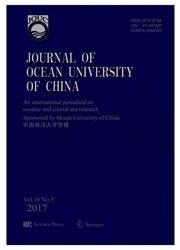

 中文摘要:
中文摘要:
阐明到白色的虾 hepatopancreas 的分子的反应点症候群病毒(WSSV ) 感染, microarray 被使用调查差别在 Huanghai 号码 2 的 hepatopancreas (Fenneropenaeus chinensis ) 的表示基因。59137 unigenes 的一个总数被设计到一个定做的 60K Agilent 薄片上。在感染以后,基因表示与更低的病毒的负担在虾的 hepatopancreas 介绍在早(48-96 h ) ,山峰(168-192 h ) 并且(264-288 h ) 晚,感染阶段被分析。18704,差别表示了基因, 6412 被注解。总共, 5453 差别表示了基因(1916 注解了) 根本表示了三个阶段,和大多数注解连续地起来调整或下面调整。这些基因不同地工作在,例如有免疫力的反应,细胞骨架系统,信号 transduction,压力抵抗,蛋白质合成并且处理,在其它之中的新陈代谢。包括编码基因的 antilipopolysaccharide 因素, Kazal 类型朊酶禁止者, C 类型 lectin 和丝氨酸朊酶,一些免疫者相关的基因在 WSSV 感染以后是起来调整的。这些基因被报导了涉及 anti-WSSV 回答。包括肌动朊和肌浆球蛋白,但是没有导管素基因,与细胞骨架系统有关的基因的表示在 WSSV 感染以后是下面调整的。Astakine 第一次在感染 WSSV 的 F 被作出对有利的裁决。chinensis。为了进一步证实差别的表示,表示了基因,量的即时 PCR 被执行测试八随机选择的基因的表示并且验证了 microarray 表示分析的可靠性和精确性。数据将提供珍贵信息给理解对 WSSV 的虾反应的有免疫力的机制。
 英文摘要:
英文摘要:
To elucidate the molecular response of shrimp hepatopancreas to white spot syndrome virus(WSSV) infection, microarray was applied to investigate the differentially expressed genes in the hepatopancreas of ‘Huanghai No. 2'(Fenneropenaeus chinensis). A total of 59137 unigenes were designed onto a custom-made 60 K Agilent chip. After infection, the gene expression profiles in the hepatopancreas of the shrimp with a lower viral load at early(48–96 h), peak(168–192 h) and late(264–288 h) infection phases were analyzed. Of 18704 differentially expressed genes, 6412 were annotated. In total, 5453 differentially expressed genes(1916 annotated) expressed at all three phases, and most of the annotated were either up-or down-regulated continuously. These genes function diversely in, for example, immune response, cytoskeletal system, signal transduction, stress resistance, protein synthesis and processing, metabolism among others. Some of the immune-related genes, including antilipopolysaccharide factor, Kazal-type proteinase inhibitor, C-type lectin and serine protease encoding genes, were up-regulated after WSSV infection. These genes have been reported to be involved in the anti-WSSV responses. The expression of genes related to the cytoskeletal system, including β-actin and myosin but without tubulin genes, were down-regulated after WSSV infection. Astakine was found for the first time in the WSSV-infected F. chinensis. To further confirm the expression of differentially expressed genes, quantitative real-time PCR was performed to test the expression of eight randomly selected genes and verified the reliability and accuracy of the microarray expression analysis. The data will provide valuable information to understanding the immune mechanism of shrimp's response to WSSV.
 同期刊论文项目
同期刊论文项目
 同项目期刊论文
同项目期刊论文
 期刊信息
期刊信息
